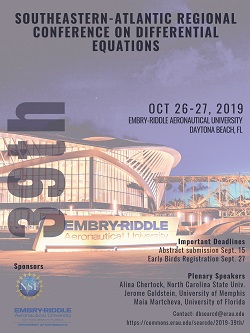Institution
ERAU
Abstract
Efficiently coupling meteorology and wave models in the next step in the simulation of ocean waves. In order to achieve this goal, it is important to improve coupling relationships and physically based forcing terms in the transport equations of the wave model. In this work, we investigate the impact of a wave-age dependent surface roughness on waves generated by winds of different strengths. We concentrated our efforts around the critical layer, the region where the real part of the complex wave speed is equal to the mean flow velocity as this region is at the center of the interpretation of growth waves. As it can be observed in nature, ocean waves travel in groups and are changing in amplitude with time. We also incorporate a recently derived expression of the energy transfer rate to investigate groups of waves growing and decaying with time under the influence of the surrounding wind field.
Sensitivity of a Coupled Wind /Wave Model Using Energy Transfer Schemes for Growing Waves
Efficiently coupling meteorology and wave models in the next step in the simulation of ocean waves. In order to achieve this goal, it is important to improve coupling relationships and physically based forcing terms in the transport equations of the wave model. In this work, we investigate the impact of a wave-age dependent surface roughness on waves generated by winds of different strengths. We concentrated our efforts around the critical layer, the region where the real part of the complex wave speed is equal to the mean flow velocity as this region is at the center of the interpretation of growth waves. As it can be observed in nature, ocean waves travel in groups and are changing in amplitude with time. We also incorporate a recently derived expression of the energy transfer rate to investigate groups of waves growing and decaying with time under the influence of the surrounding wind field.


Comments
View Parallel Session - Saturday, October 26th - Shar Sajjadi.
View Parallel Session - Sunday, October 27th - Frederique Drullion.